
The aperture is an opening in certain kinds of mollusc shells: it is the main opening of the shell, where the head-foot part of the body of the animal emerges for locomotion, feeding, etc.
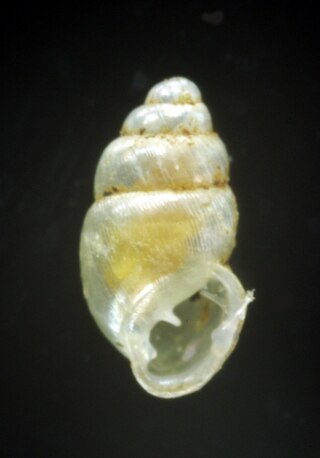
Carychiinae is a taxonomic subfamily of minute air-breathing land snails, terrestrial pulmonate gastropod mollusks.

Zospeum is a genus of air-breathing land snails, terrestrial pulmonate gastropod mollusks in the family Ellobiidae, the salt marsh snails.
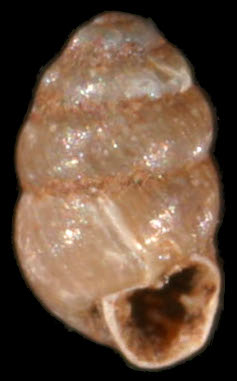
Vertigo pygmaea, common name the "crested vertigo", is a species of minute air-breathing land snail, a terrestrial pulmonate gastropod mollusk in the family Vertiginidae, the whorl snails.

Vertigo antivertigo is a species of minute air-breathing land snail, a terrestrial pulmonate gastropod mollusc or micromollusc in the family Vertiginidae, the whorl snails.

Ellobiidae, common name the hollow-shelled snails, is a family of small air-breathing land snails, terrestrial pulmonate gastropod mollusks in the clade Eupulmonata. Ellobiidae is the only family in the superfamily Ellobioidea, according to the taxonomy of the Gastropoda by Bouchet & Rocroi, 2005).

Carychium is a genus of very small air-breathing land snails, terrestrial pulmonate gastropod mollusks in the family Ellobiidae.
Amnicola missouriensis, common name the Missouri amnicola, is a species of freshwater snail, an aquatic gastropod mollusk in the family Amnicolidae.
Halgyrineum louisae is a species of predatory sea snail, a marine gastropod mollusk in the family Cymatiidae.

Bostryx chusgonensis is a species of tropical air-breathing land snail, a pulmonate gastropod mollusk in the family Bulimulidae.
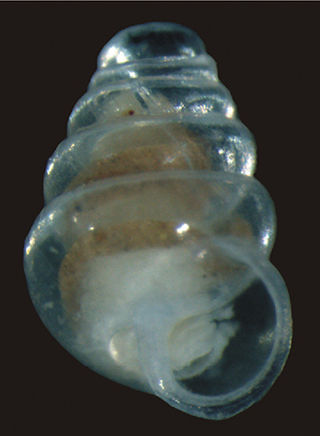
Zospeum tholussum or the domed land snail, is a cave-dwelling species of air-breathing land snails in the family Ellobiidae. It is a very small species, with a shell height of less than 2 mm (0.08 in) and a shell width of around 1 mm (0.04 in). Z. tholussum individuals are completely blind and possess translucent shells with five to six whorls. The second whorl of their shells has a characteristic dome-like shape. They are also extremely slow-moving and may depend on passive transportation through running water or larger animals for dispersal.
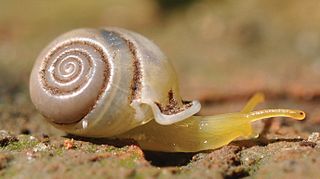
Perrottetia aquilonaris is a species of air-breathing land snail, a terrestrial pulmonate gastropod mollusc in the family Streptaxidae.
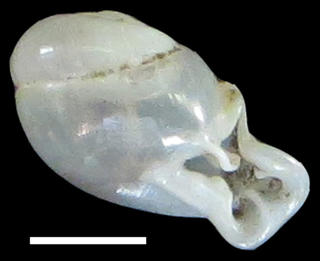
Perrottetia hongthinhae is a species of air-breathing land snail, a terrestrial pulmonate gastropod mollusc in the family Streptaxidae.
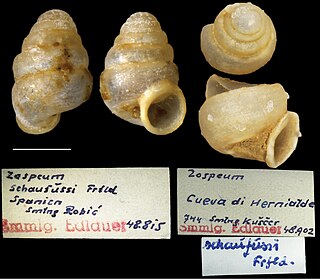
Zospeum vasconicum is a cave-dwelling species of air-breathing land snails.
Koreozospeum is a genus of small air-breathing land snails. It contains a single species, Koreozospeum nodongense.
Zospeum robustum is a cave-dwelling species of air-breathing land snails.
Zospeum bucculentum is a cave-dwelling species of air-breathing land snails.
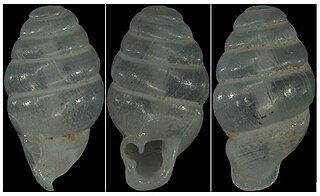
Laoennea renouardi is one of two species in the genus Laoennea of the Asian terrestrial snail family Diapheridae.
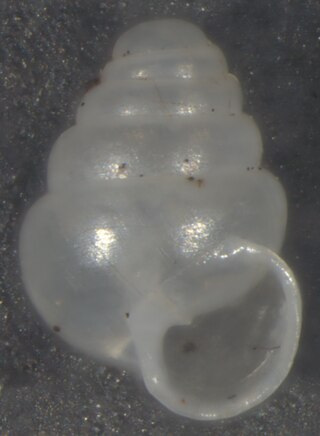
Zospeum manitaense is a cave-dwelling species of air-breathing land snail. Some individuals in this genus were previously described under the name of Zospeum amoenum, Zospeum isselianum or Zospeum pretneri.
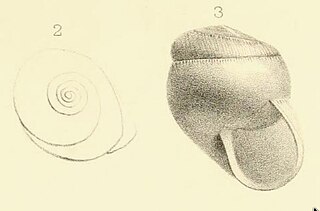
Afristreptaxis bloyeti is a species of air-breathing land snail, a terrestrial pulmonate gastropod mollusk in the family Streptaxidae.













